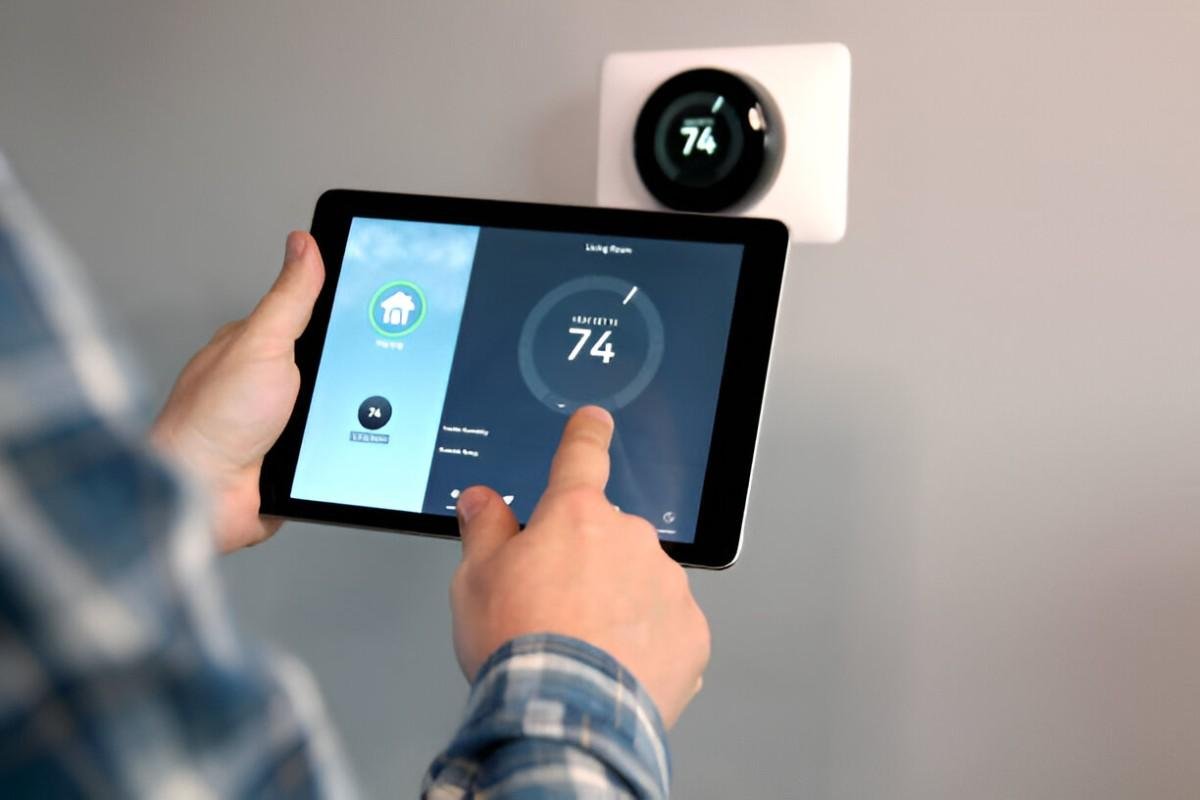Keeping your home comfortable while saving energy is an art that a smart thermostat can master. If you’re like me, you want to invest in a thermostat that balances convenience, functionality, and efficiency. But with so many options on the market, it can feel overwhelming to make the right choice. Let me guide you through everything you need to know to find the best smart thermostat for your home.
Table of Contents
Why Consider a Smart Thermostat?
A smart thermostat goes beyond merely setting your home’s temperature. It learns your preferences, adjusts to your schedule, and offers remote control through a smartphone or voice commands. This isn’t just about comfort; it’s about using energy wisely and saving money on utility bills.
Benefits of Smart Thermostats
- Energy Savings: Smart thermostats optimize heating and cooling schedules, leading to significant energy efficiency.
- Convenience: Control your home’s climate from anywhere using a mobile app.
- Customization: Many models learn your routines and adjust accordingly.
- Integration: They work seamlessly with smart home devices like Amazon Alexa or Google Assistant.
Key Features to Look For
Before diving into the comparisons, it’s essential to understand what features matter most in a smart thermostat. Here are some key aspects to consider:
Compatibility
Ensure the thermostat is compatible with your HVAC system. Most smart thermostats work with common systems, but if you have a heat pump or multi-stage unit, double-check compatibility.
Learning Capabilities
Some thermostats, like the Nest Learning Thermostat, adapt to your habits over time. If you prefer a “set-it-and-forget-it” approach, this feature is crucial.
Geofencing
Geofencing uses your phone’s location to adjust the temperature automatically when you leave or return home.
Scheduling Options
A good thermostat lets you program heating and cooling schedules to suit your lifestyle.
Energy Monitoring
Energy usage reports help you understand where your energy goes and find ways to save.
Smart Home Integration
Look for compatibility with systems like Amazon Alexa, Google Home, Apple HomeKit, or IFTTT for seamless smart home control.
Installation Ease
While some smart thermostats are DIY-friendly, others might require professional installation.
Comparing the Best Smart Thermostats
Here’s a detailed comparison of some top-rated smart thermostats to help you decide which is the best for your home.
| Feature | Nest Learning Thermostat | Ecobee SmartThermostat | Honeywell Home T9 | Amazon Smart Thermostat |
|---|---|---|---|---|
| Price | $249 | $249 | $199 | $59 |
| Learning Capability | Yes | Yes | No | No |
| Geofencing | Yes | Yes | Yes | Yes |
| Voice Control | Yes | Yes | Yes | No |
| Energy Reports | Yes | Yes | Yes | No |
| Smart Home Support | Google, Alexa | Google, Alexa, HomeKit | Alexa | Alexa |
In-Depth Reviews
Nest Learning Thermostat
This thermostat shines with its ability to learn your preferences and adjust automatically. It features a sleek design and works well with Google Assistant. If you’re looking for a device that requires minimal manual input, the Nest is a strong contender.
Ecobee SmartThermostat
Ecobee’s standout feature is the included room sensor, which ensures temperature consistency across your home. It’s perfect for larger houses or those with uneven heating.
Honeywell Home T9
If geofencing and affordability are your priorities, the T9 is an excellent choice. It’s user-friendly and compatible with Alexa but lacks the learning capabilities of pricier models.
Amazon Smart Thermostat
For budget-conscious buyers, this thermostat offers basic smart features at an unbeatable price. It’s an excellent entry point into smart home technology but doesn’t provide advanced functionalities like learning.
Factors to Consider Based on Your Needs
Budget
If you’re trying to save money, the Amazon Smart Thermostat is hard to beat. But if you’re willing to spend more for advanced features, the Nest or Ecobee models are worth the investment.
Smart Home Ecosystem
Think about your existing smart home setup. If you’re deeply integrated with Google, the Nest Learning Thermostat makes sense. For Apple HomeKit users, Ecobee is a better fit.
Home Size and Layout
In larger homes, uneven heating can be a problem. A thermostat with room sensors, like the Ecobee SmartThermostat, will help keep temperatures balanced.
Climate
If you live in a region with extreme temperatures, energy-saving features like learning capabilities and geofencing become more critical.
Installation Tips
DIY vs. Professional Installation
Most smart thermostats come with installation guides, and many homeowners can handle it themselves. However, if you have a complex HVAC system or aren’t comfortable with wiring, hiring a professional is a safer bet.
Tools You’ll Need
- Screwdriver
- Wire labels
- Smartphone for setup
Common Pitfalls
- Failing to check system compatibility before purchase.
- Skipping the step to label wires during removal of the old thermostat.
Maximizing Your Smart Thermostat’s Potential
Use Energy Reports
Leverage the insights from energy reports to tweak your settings for optimal savings.
Set Schedules
Take advantage of scheduling features to ensure your home is always at the right temperature when you’re there, without wasting energy when you’re not.
Integrate with Other Smart Devices
Pairing your thermostat with other devices, such as smart plugs or lights, can enhance your home’s energy efficiency.
Final Thoughts
Choosing the right smart thermostat for your home boils down to understanding your needs and priorities. Whether you’re looking for cutting-edge technology like the Nest Learning Thermostat, energy-saving consistency from Ecobee, or budget-friendly simplicity from Amazon, there’s a smart thermostat that’s perfect for you. By considering the features that matter most and comparing options carefully, you’ll be well on your way to a more comfortable and efficient home.





